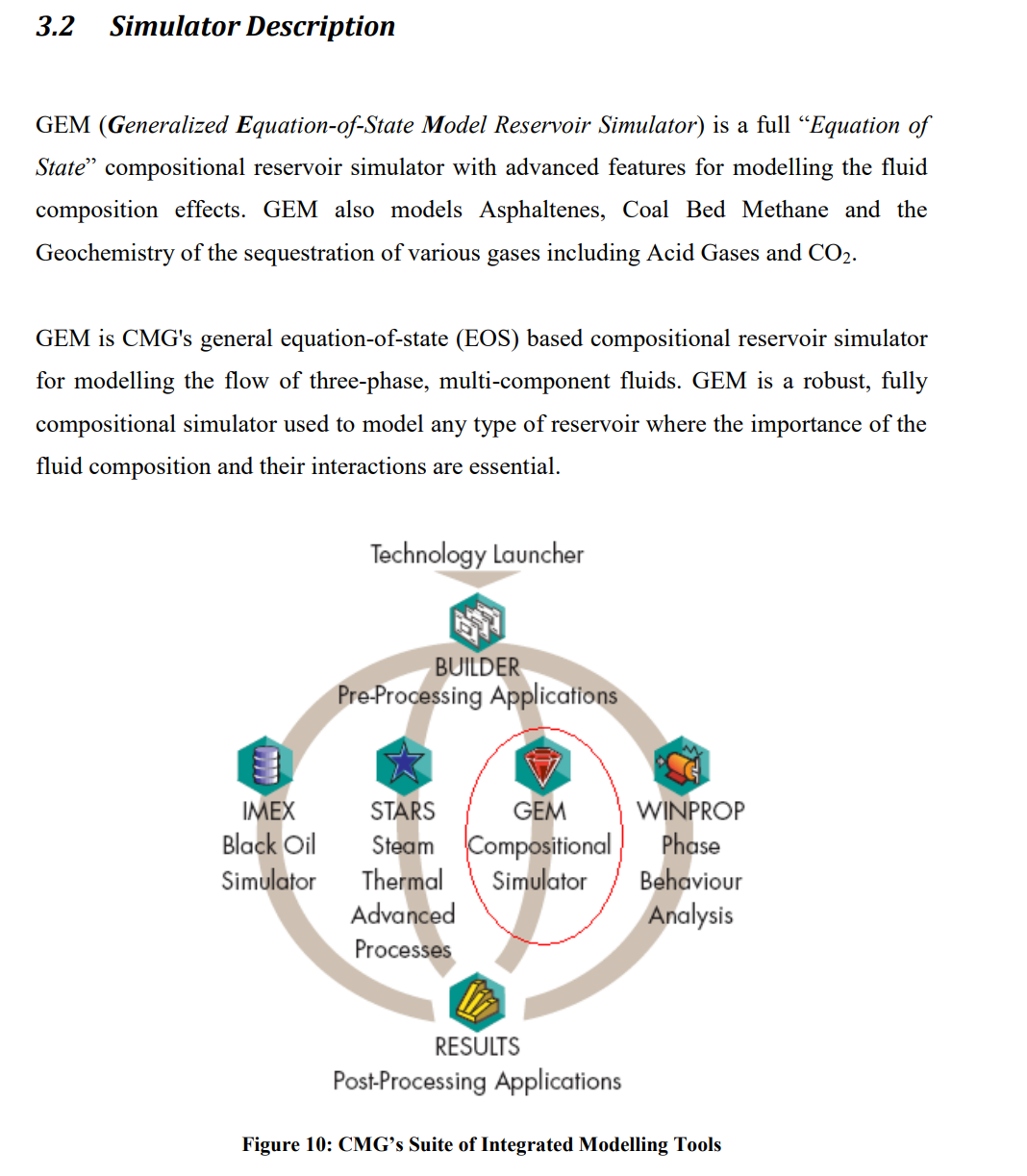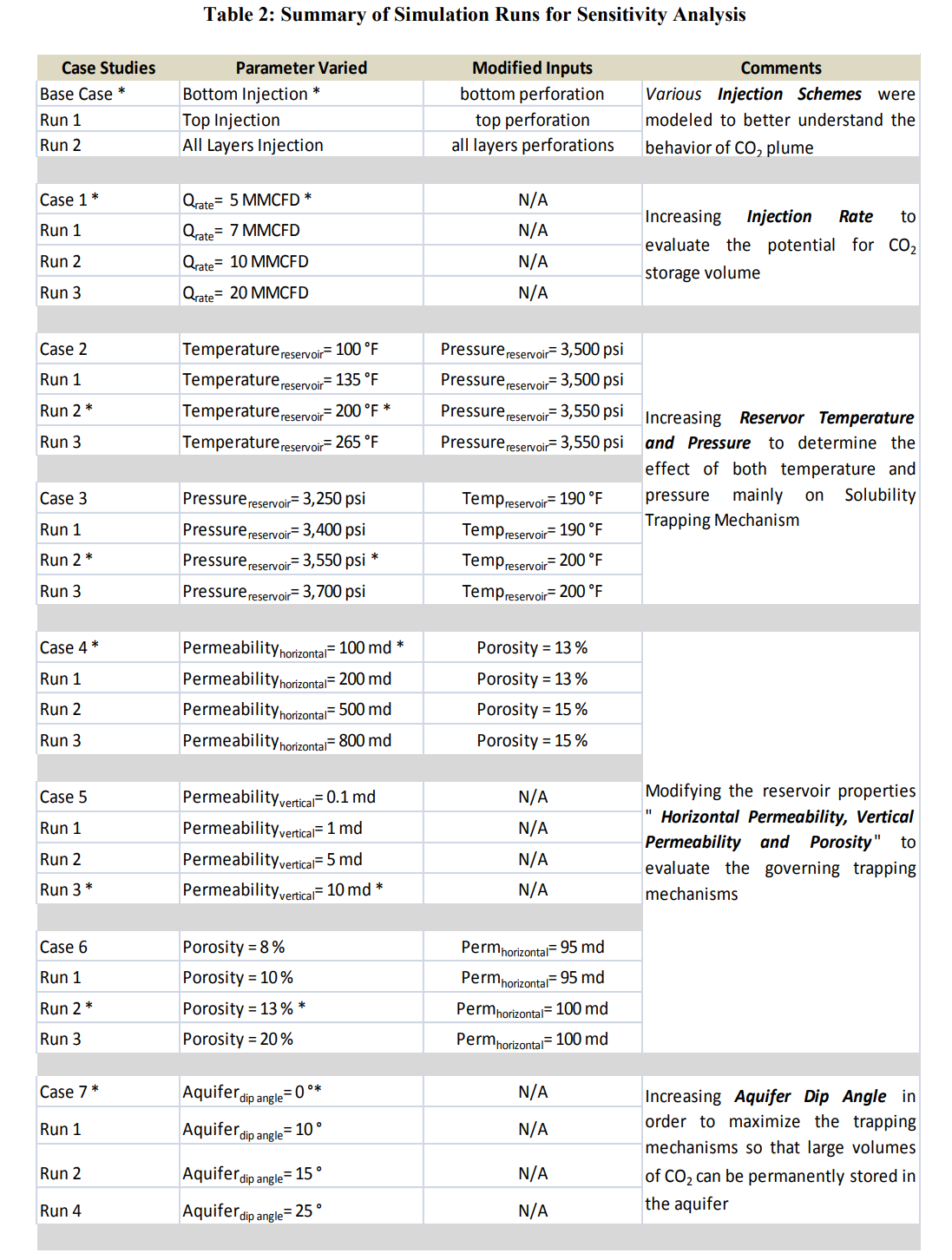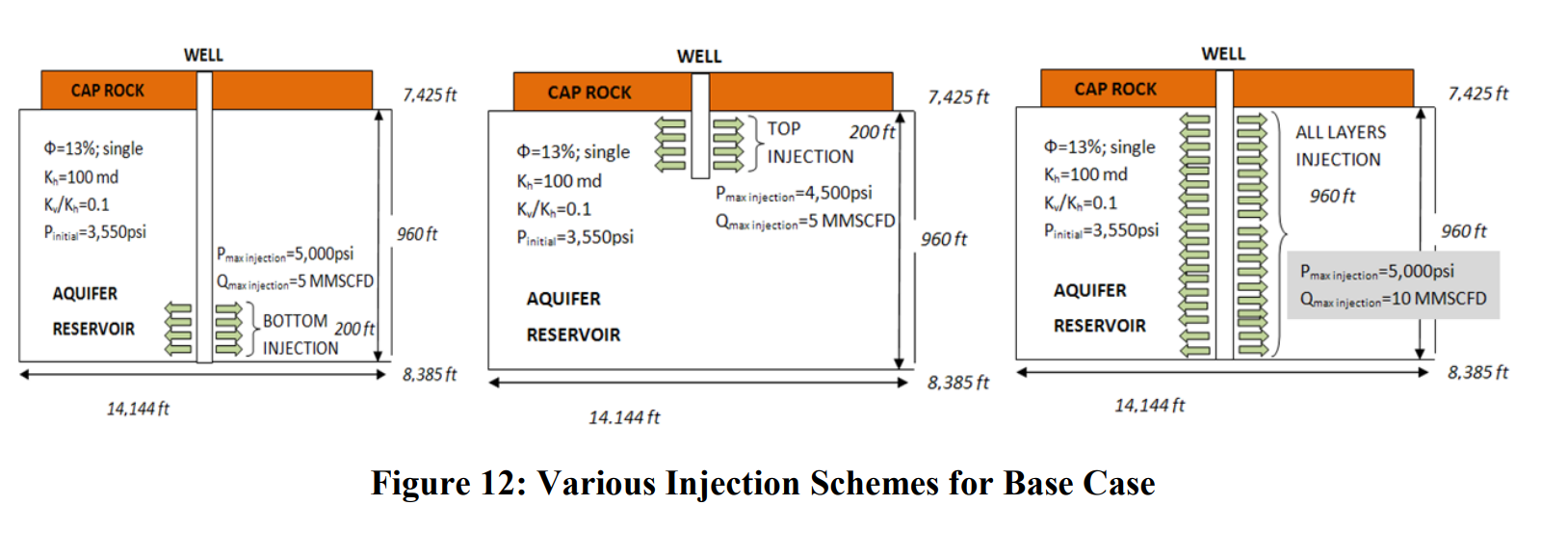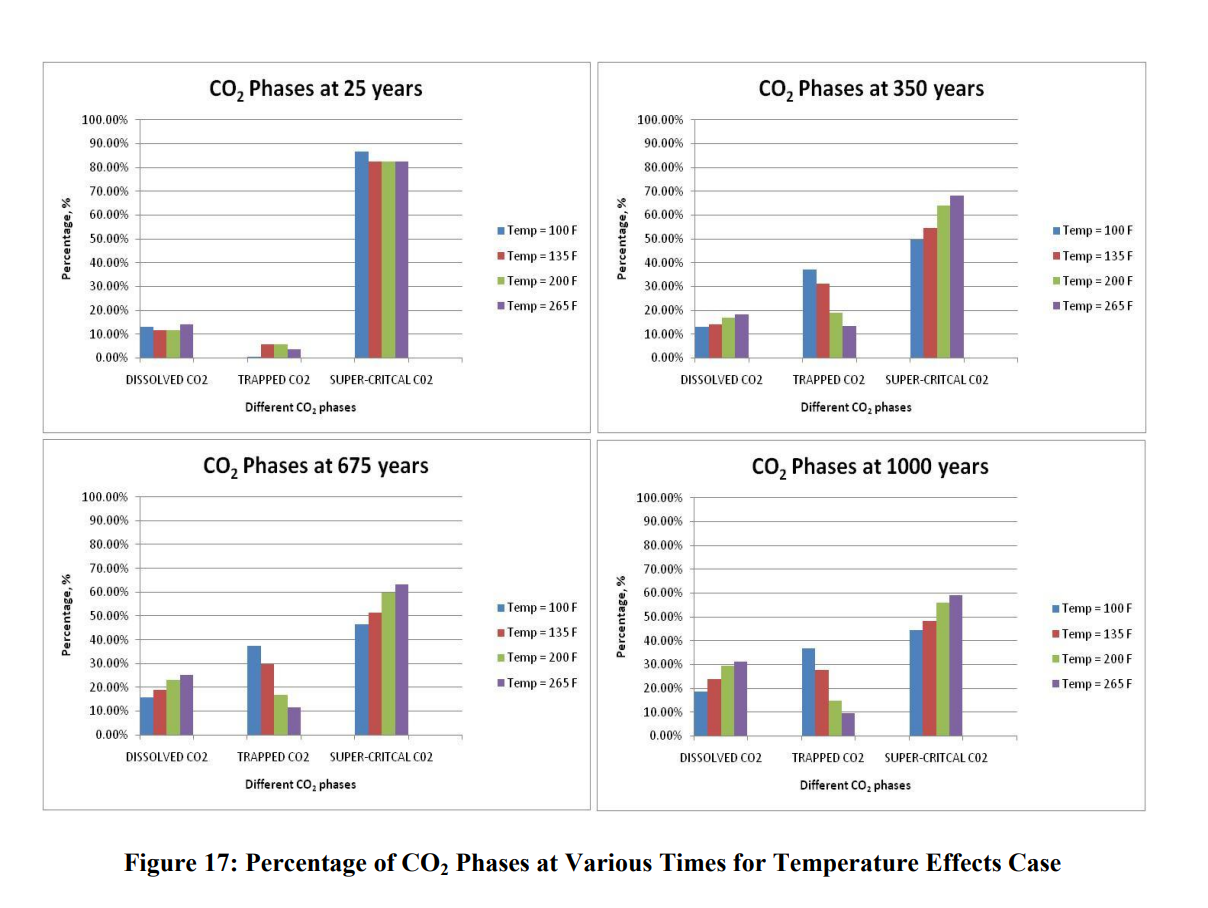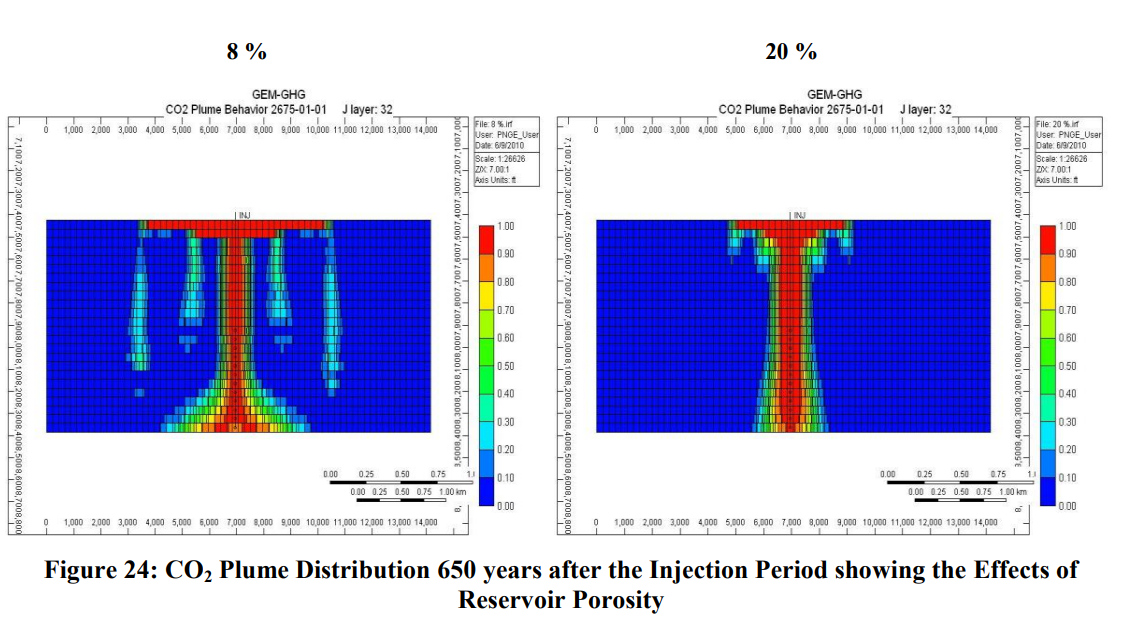The impact of formation characteristics on CO2 sequestration into an aquifer
随着全球温度升高和二氧化碳排放量的增加,人们希望将地质储存作为安全、快速处置二氧化碳的潜在场所,需要研究地质参数对二氧化碳封存的影响。CO2封存过程复杂,不同参数影响注入CO2的行为,因此需要进行数值模拟。
本文目的是研究含水层性质和运行参数的影响,以了解CO2羽流行为及其对各种捕集机制的贡献,将有助于最大限度地减少二氧化碳封存量和注入能力估计的不确定性。为了实现这些目标,首先选择一组具有代表性的含水层特征参数进行模拟,然后模拟注入方案和注入速率变化,以评估CO2羽流行为和CO2储存潜力。
此外,本研究得出储层性质和倾角变化对不同的捕集机制的影响。结果表明,轻微倾斜的含水层,以高速度底部注入CO2,对注入量、溶解量和捕集量有重大影响。底部完井和高速注入能够注入更多的CO2,并且由于浮力效应和羽流的更大分布面积,使得羽流与水层的接触面积更大,这将增强溶解捕集和残余气捕集机制。温度和压力对CO2的溶解度有轻微影响。结果还表明,储层渗透率对溶解和捕集的CO2有很大影响,因为它加速了CO2的侧向运移及溶解到盐水中。
西弗吉尼亚大学
With the increasing trends in global temperature and CO2 emissions, there is expanding interest in geological storing as potential sites for the safe and fast disposal of CO2. This expanding interest necessitates the need of studying the effects of geological parameters on CO2 sequestration. The processes that occur in CO2 sequestration are complex with many different parameters influencing the behavior of the injected CO2 and therefore numerical simulations are required.
The objective of this research is to study the impact of the aquifer properties and operational parameters to understand the CO2 plume behavior and their contribution to various trapping mechanisms. Such study will help minimize uncertainty in estimates of the capacity and injectivity of CO2. In order to accomplish these objectives, selection of a set of representative characteristics for an aquifer as base case was first modeled. Next variation of injection schemes and rates were modeled to evaluate CO2 plume behavior and the potential of CO2 storage volume.
In addition this study demonstrates how different trapping mechanisms are influenced by variation of reservoir properties and dip angle. These studies show that bottom injection of CO2 at high rates for a slight dipping aquifer has a significant impact on the total amount of CO2 injected, dissolved and trapped in the aquifer. Bottom completion and high-rate injection allow more CO2 to be injected and the plume to come into contact with larger amount of brine due to buoyancy effect and larger distribution of the plume, which will enhance solubility and residual trapping mechanisms. Temperature and pressure have a slight impact on the solubility of CO2. The results also show that reservoir permeability has a large impact on the dissolved and trapped CO2, as it facilitates the lateral migration of CO2 enhancing dissolution into the brine.
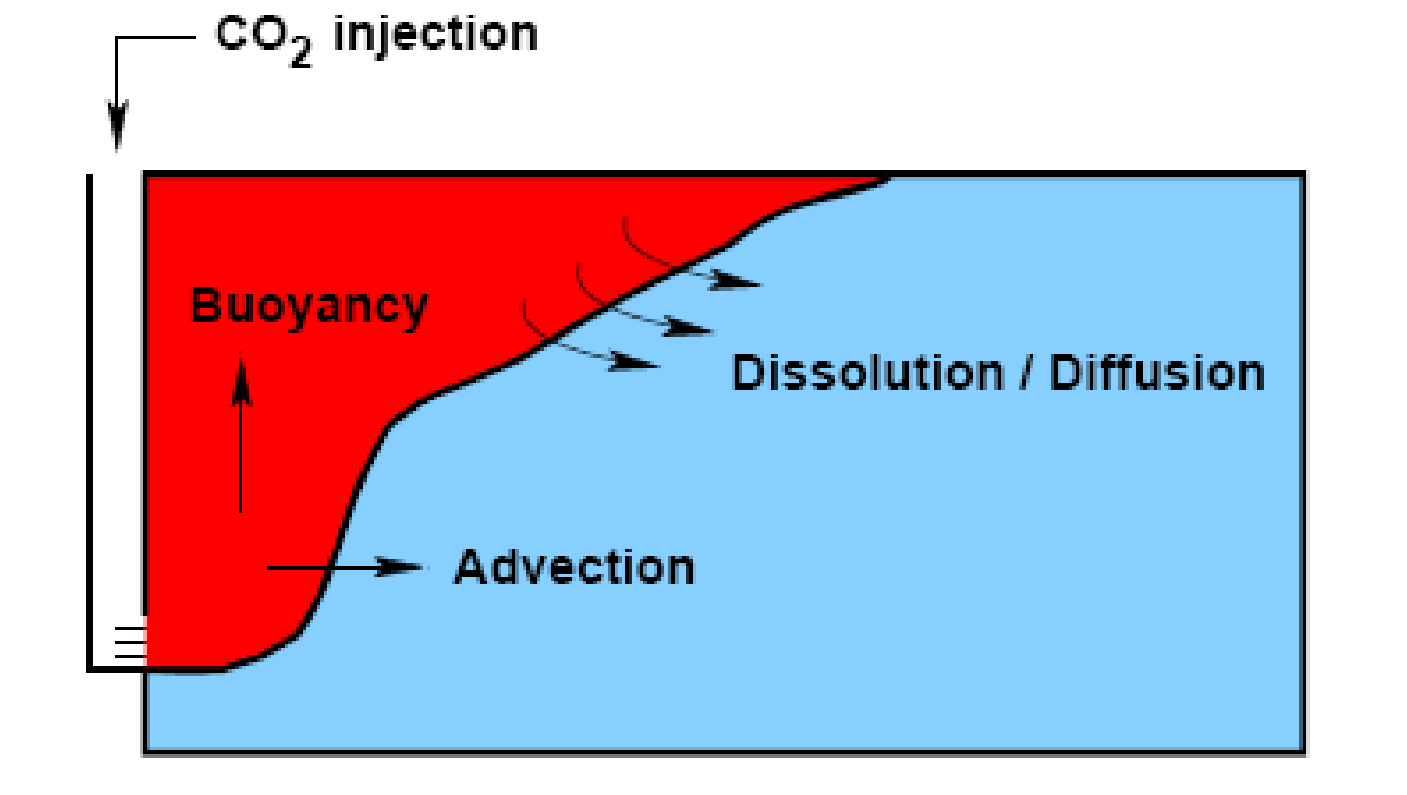
Figure 8: Relevant Transport Processes of CO2
